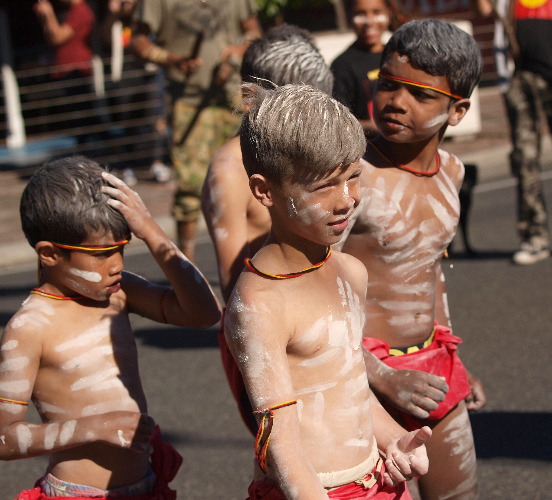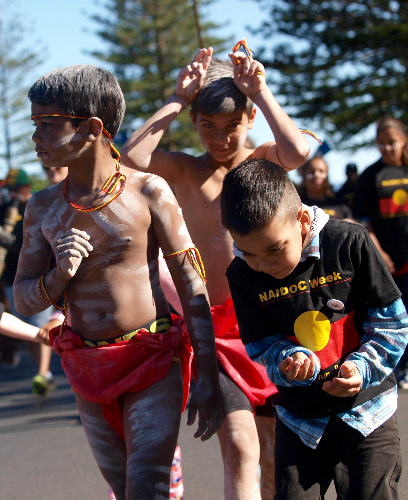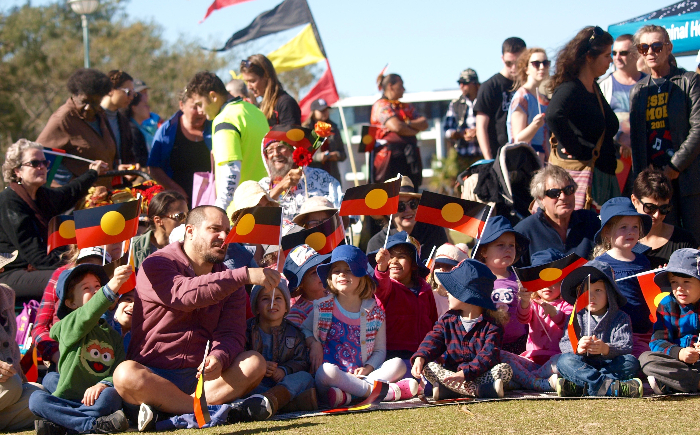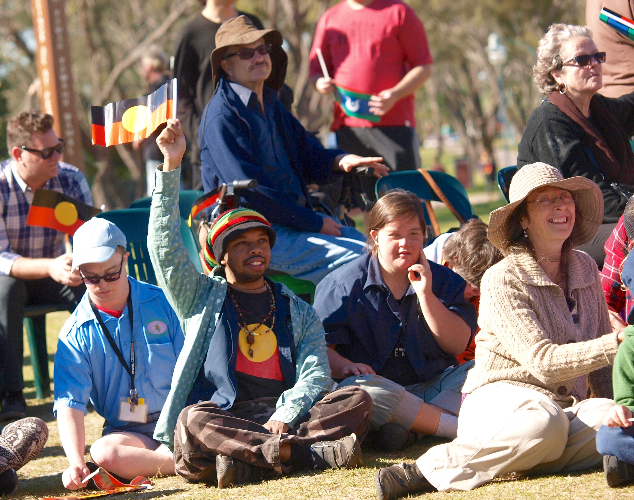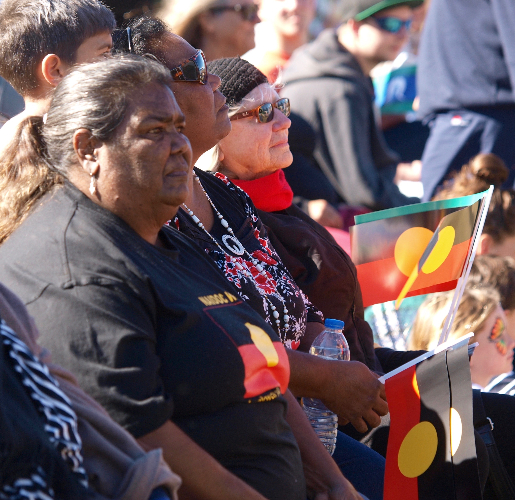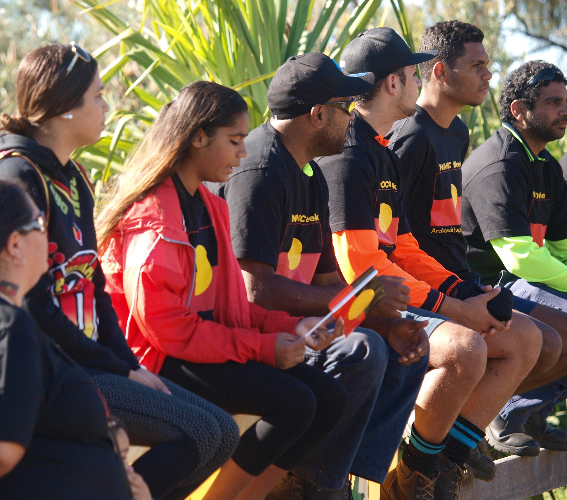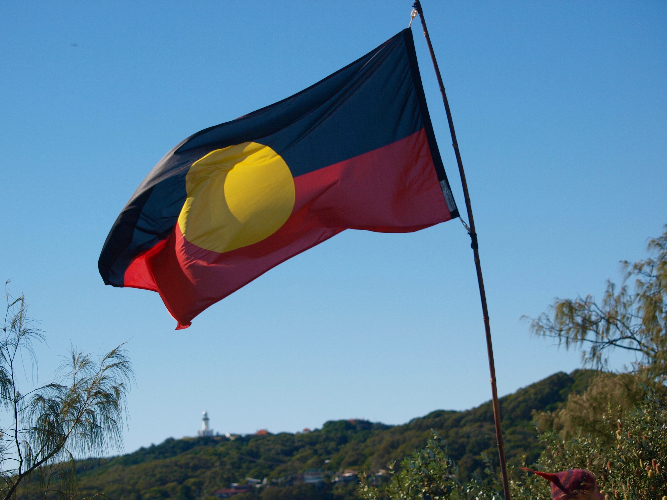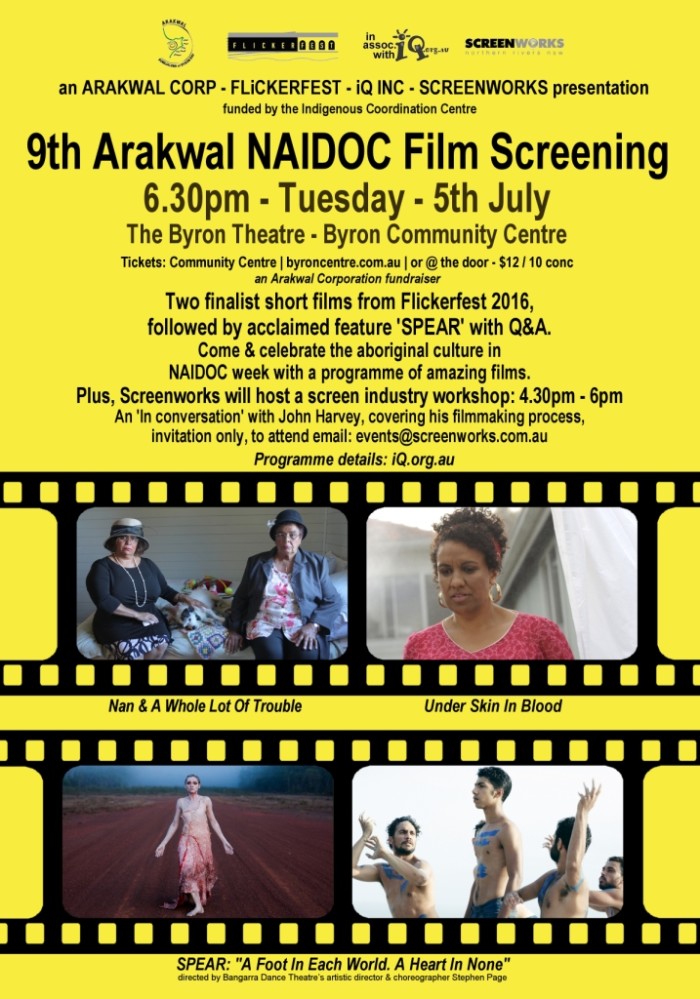Our Men’s dance group here is called Bigal Nali Jagun which means ‘Men coming together representing country’.
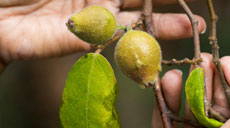 Join an Arakwal Aboriginal Discovery Ranger to learn more about Arakwal Bundjalung people and their ongoing connection to culture in their local area. Explore the special connection to the Cape Byron State Conservation Area, known as Walgun, and other sites of significance. Rangers discuss traditional and contemporary culture, using Aboriginal tools, weapons and artefacts. Find about joint management between Arakwal (Bundjalung) people and the National Parks and Wildlife Service (NPWS). The activity is conducted along the iconic Cape Byron Walking Track, hearing traditional stories and local history along the way. This activity is undertaken at the Cape Byron State Conservation Area, starting at Wategos Beach and finishing at the Cape Byron Lighthouse.
Join an Arakwal Aboriginal Discovery Ranger to learn more about Arakwal Bundjalung people and their ongoing connection to culture in their local area. Explore the special connection to the Cape Byron State Conservation Area, known as Walgun, and other sites of significance. Rangers discuss traditional and contemporary culture, using Aboriginal tools, weapons and artefacts. Find about joint management between Arakwal (Bundjalung) people and the National Parks and Wildlife Service (NPWS). The activity is conducted along the iconic Cape Byron Walking Track, hearing traditional stories and local history along the way. This activity is undertaken at the Cape Byron State Conservation Area, starting at Wategos Beach and finishing at the Cape Byron Lighthouse.
- Download Walk With Me: Aboriginal Walk and Talk Information
- Make a Booking
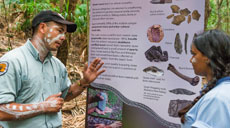 Uncover the past and yarn about the present by joining traditional custodians, Arakwal Aboriginal guides in an investigation of The Pass midden, a 1000 year old significant Aboriginal site. Get involved in a walking storybook within the Cape Byron State Conservation Area and learn about the archaeological study, cultural traditions, bush tucker, the kinds, of weapons and tools used and the size of local communities and their use of the midden over time. The Pass midden is the only known large, substantially undisturbed foredune pipi midden remaining out of 82 middens recorded along the 75km coastline between Ballina and NSW-QLD border.
Uncover the past and yarn about the present by joining traditional custodians, Arakwal Aboriginal guides in an investigation of The Pass midden, a 1000 year old significant Aboriginal site. Get involved in a walking storybook within the Cape Byron State Conservation Area and learn about the archaeological study, cultural traditions, bush tucker, the kinds, of weapons and tools used and the size of local communities and their use of the midden over time. The Pass midden is the only known large, substantially undisturbed foredune pipi midden remaining out of 82 middens recorded along the 75km coastline between Ballina and NSW-QLD border.
- Download Yarning About The Pass Midden Information
- Make a Booking
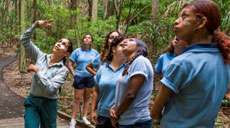 Join an Arakwal Aboriginal Discovery Guide to learn more about Arakwal Bundjalung people and their ongoing connection to culture in their local area. Explore the special connection to the Cape Byron State Conservation Area known as Walgun and other sites of significance. Rangers discuss traditional and contemporary culture, using Aboriginal tools, weapons and artefacts. Find about joint management between Arakwal (Bundjalung) people and the National Parks and Wildlife Service (NPWS). The activity concludes by walking the iconic Cape Byron Walking Track, hearing traditional stories and local history along the way.
Join an Arakwal Aboriginal Discovery Guide to learn more about Arakwal Bundjalung people and their ongoing connection to culture in their local area. Explore the special connection to the Cape Byron State Conservation Area known as Walgun and other sites of significance. Rangers discuss traditional and contemporary culture, using Aboriginal tools, weapons and artefacts. Find about joint management between Arakwal (Bundjalung) people and the National Parks and Wildlife Service (NPWS). The activity concludes by walking the iconic Cape Byron Walking Track, hearing traditional stories and local history along the way.
- Download Walgun Walk and Talk Information
- Make a Booking
Bundjalung of Byron Bay Arakwal people are committed to working in genuine partnership within our Byron Shire area with schools, businesses and local council. Ceremonies and protocols are a vital part of Aboriginal culture. As part of this commitment we present to you protocols to be used in promotion of greater understanding of Arakwal Bundjalung people’s obligation to country and culture.
Arranging a “Welcome to Country” of the land shows respect for Arakwal Bundjalung people as the First Peoples. Welcome to Country promotes an awareness, understanding and mutual respect for cultural practices by both Arakwal Bundjalung and the wider community through observation of protocols and sharing in cultural practice. Improving relationships between the local Aboriginal community and the wider community through ceremony, protocols and the process of collaborative negotiation is vital.
Bottlenose Dolphin (Tursiops aduncus) is an important totem for our people. Wajoong gives us messages about relationships between our clan members, to our ancestors and the past, and also to particular places and sites in our Country. We have stories of our people and dolphins communicating and connecting with each other, including co-operative fishing, sharing resources from the ocean, and playing in the shallows. Sea Eagle (Miwing)
White Breasted Sea Eagle (Haliaetus leucogaster) is an important totem for us. Miwing gives us messages about clan and family groups, provides knowledge on hunting practices and environmental events on Country. The second largest raptor (bird of prey), you can see the majestic Miwing soaring above you as you walk along Tallow Beach or around the Cape. Carpet Snake (Kabul)
Carpet Snake (Morelia spilota) as one of our key totems symbolises the relationship of clan members to each other, to our ancestors and the past, and to particular places or sites. Kabul are important to us for their conservation, wild resource and other cultural values. Brush Turkey (Wollum)
Brush Turkey (Alectura lathami) is a messenger providing clues about and demonstrating knowledge and adaptability in knowing and using Country. Wollum lives and moves freely in the coastal bush, foraging through leaf litter for food to eat. The male builds large mounds out of vegetative material and uses it to incubate their eggs. Pied Oystercatcher (language name?)
Pied Oystercatcher (Haematopus longirostris) is an important bird to us because they provide messages about food sources and environmental events in Country. The Pied forages on the beaches and rocky shores, in mudflats of inlets, bays, ocean beaches, and on offshore islets. Green Turtle (Bijahlin)
Green Turtle (Chelonia mydas) is an important messenger that provides knowledge of the sea Country. Biwing nests on north coast beaches including Tallow Beach and Lennox Heads to the south. Julian Rocks (Nguthungulli) supports significant populations of the Biwing and if you go snorkeling or diving there, you can have a close encounter with these graceful creatures.
 NAIDOC Week 2016
NAIDOC Week 2016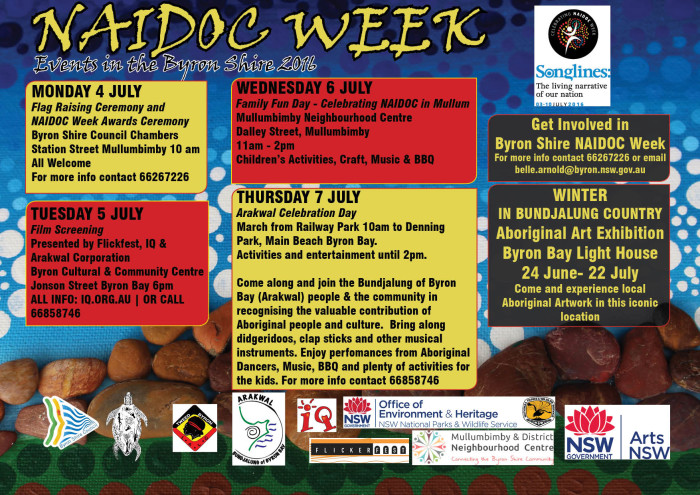 NAIDOC Program
NAIDOC Program Cultural Celebration
Cultural Celebration





